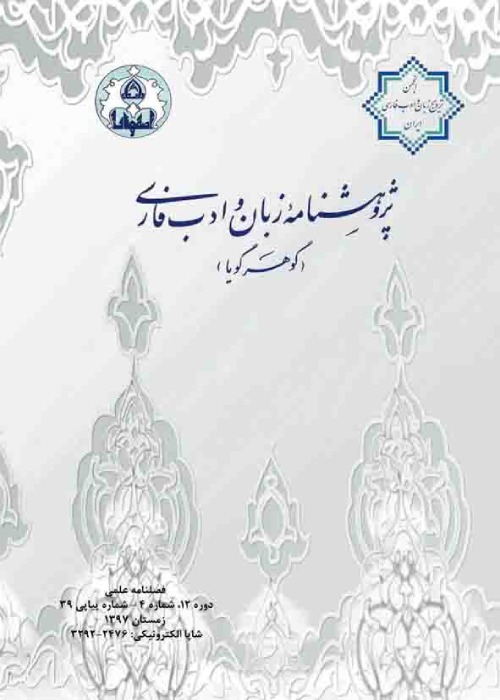Analyzing the Conceptual Metaphors of Masnavi Manavi Based on Directional Metaphors
Statement of the problem:
The relationship between language and the mind and the fact that language reflects the mind is one of the important subjects of cognitive linguistics studies. The conceptual metaphor which itself is one of the results of cognitive linguistics deals with this issue. In conceptual metaphor, the conceptual domain of the destination, which is abstract, is explained objectively with the help of everyday experiences and influenced by the culture in the source domain. The directional metaphor, which is one of the types of conceptual metaphors, has spatial directions (up, down, inside, out, front, back, surface, depth, etc.), and makes some abstract concepts localized and more comprehensible. Mystical experiences are often abstract issues, and the mystic makes them more understandable to his audience with the help of language.
In this research, the conceptual metaphors of Masnavi Manavi are investigated and analyzed by relying on directional metaphors, focusing on the first book of Masnavi Manavi.
In the first book of the Masnavi, Rumi conceptualized some abstract concepts objectively by taking help from spatial directions; for example, the spiritual position is in a high position and the influence of music, parents' words, and the impressionability of these words causes growth and upward movement (transcendence). In addition, happiness and freedom have an upward movement; therefore, positive and ideal issues have an upward direction, pride, and intoxication, which are negative issues with an upward direction. On the other hand, ingratitude, contempt, and humiliation, which are negative issues, tend downward. Humility, which is a positive moral characteristic, goes downwards, unlike the characteristics of conceptual metaphors. Inside, outside, after, before, depth, and surface are also spatial directions that are used as conceptual metaphors in the first book of Masnavi, which have been studied, categorized, and analyzed in this study.
- حق عضویت دریافتی صرف حمایت از نشریات عضو و نگهداری، تکمیل و توسعه مگیران میشود.
- پرداخت حق اشتراک و دانلود مقالات اجازه بازنشر آن در سایر رسانههای چاپی و دیجیتال را به کاربر نمیدهد.



